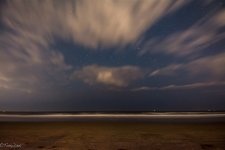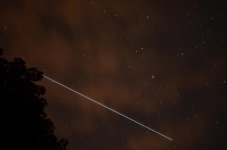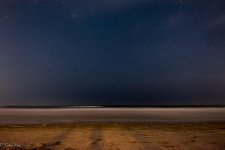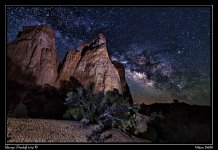Good first shot. The key to night photography is good clean sky (avoiding light pollution), the widest aperture you can come up with, and really learning and practicing editing technique.
Next time you shoot, try out the 35mm f/1.8. In combination with a much wider aperture and great glass it will really clean up some of the noise due to reducing exposure time (increases noise) or reducing ISO (reduces noise). The one challenge you run into is that the greater the focal length, the shorter the time you can expose before the stars are trailing. That is why the 12mm is nice in that you can expose for longer before you get star trails. One of my all time favorite lenses for stars on a DX camera is the Tokina 11-16mm f2.8. Larger aperture and nice and wide.
It takes practice, but in time you can figure it out. Practice, practice, practice.
One of my first before I had any clue.
http://nikonites.com/attachments/low-light-and-night/45409d1394862676t-milky-way-6.jpg
With some practice. This image actually looks much better than it looks on this page (post #30)
http://nikonites.com/monthly-assign...31st-3.html?highlight=milky+way#axzz3VDf186tO
Eventually, with a lot of practice, improved technique, and improving my gear because I was in pursuit of great night photography... I figured it out. It's definitely a journey and not a destination to capturing great night photography.
View attachment 146760
Great start and keep at it.







